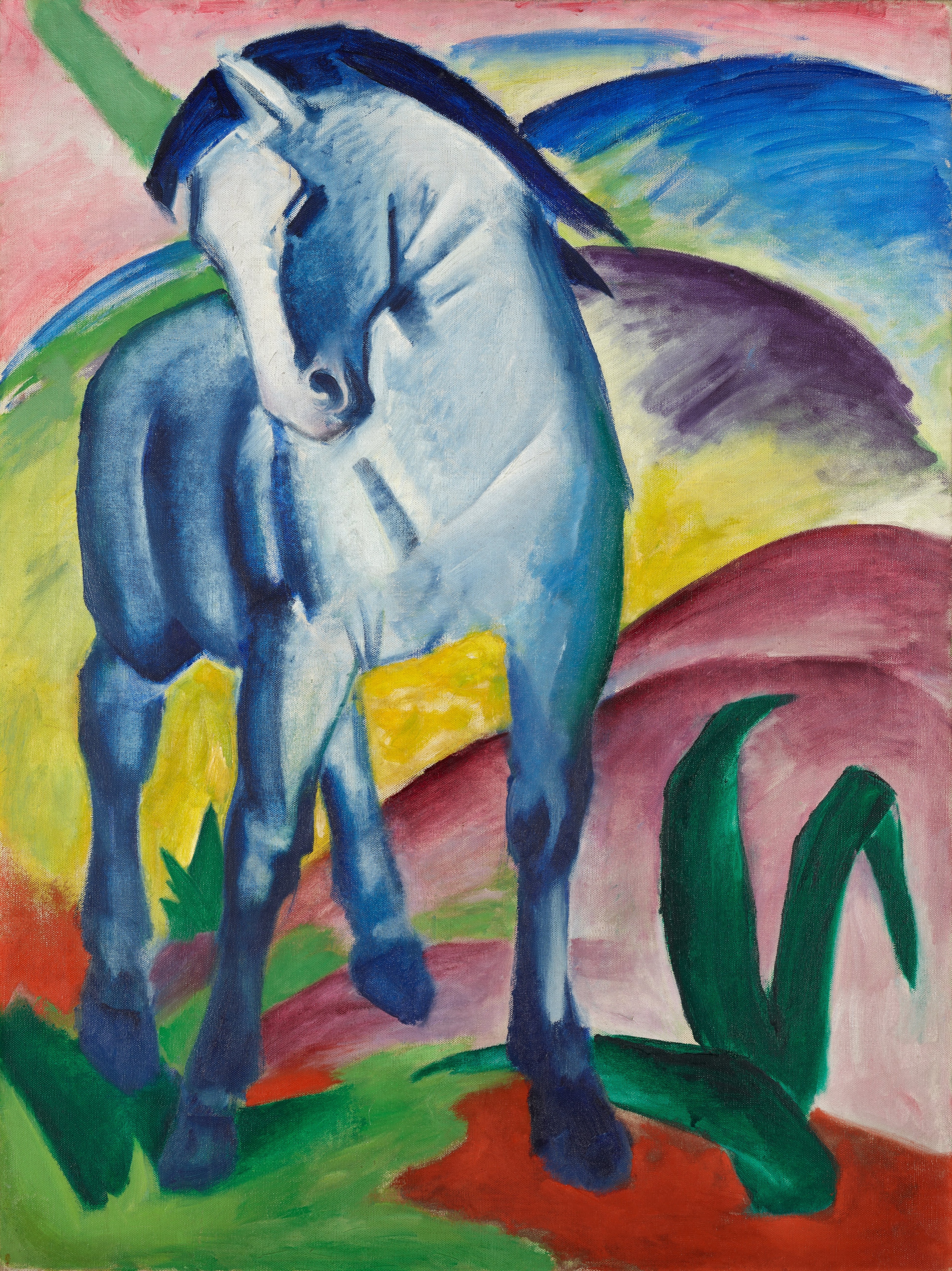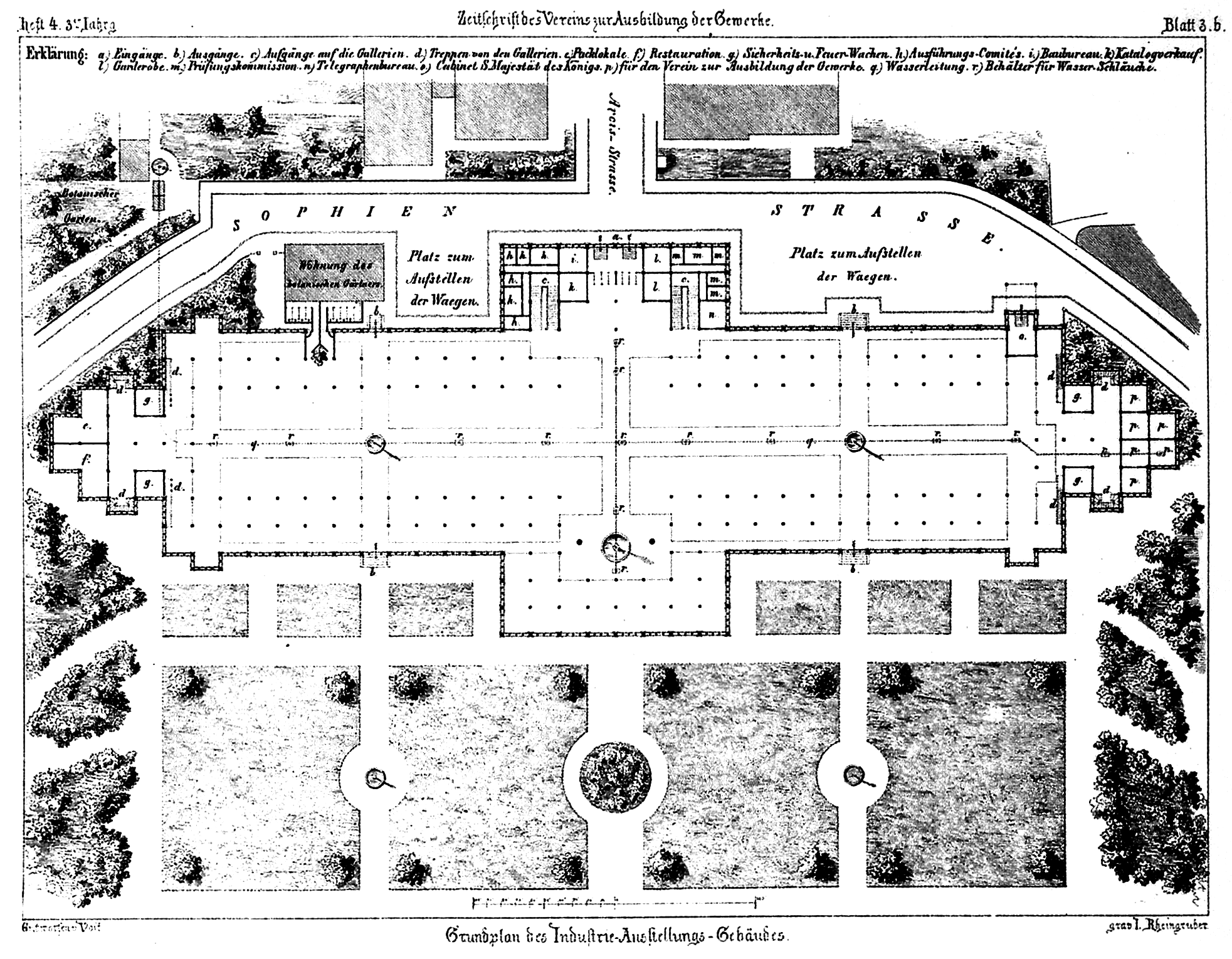|
Carl Geist
Carl Friedrich Wilhelm Geist (9 December 1870, Reichelsheim - 29 November 1931, Bad Wimpfen) was a German Impressionist painter. Life His father was the district veterinarian. In 1871, his family moved to Grünberg and he attended the Gymnasium in Laubach. In 1888, he entered the Academy of Fine Arts, Karlsruhe, where he studied under Ferdinand Keller. With a scholarship from the Grand Ducal Ministry of the Interior, he undertook further studies in Munich, Vienna and Italy. In 1900, he exhibited at the Glaspalast. Although he was officially enrolled at Karlsruhe until 1905, he actually pursued his studies with Robert von Haug in Stuttgart. He briefly lived in Darmstadt, then returned to Grünberg in 1905 although, as a free-lance painter, he travelled frequently to visit his clients. After 1915 he lived in Wimpfen. World War I hit him very hard; especially the loss of friends such as August Macke and Franz Marc. In response, he abandoned impressionism for a gloomier ... [...More Info...] [...Related Items...] OR: [Wikipedia] [Google] [Baidu] |
Robert Von Haug
Robert von Haug (27 May 1857, Stuttgart – 3 April 1922, Stuttgart) was a German impressionist painter, illustrator and lithographer who specialized in scenes from the "Befreiungskriege". Life From 1872 to 1877, he was enrolled at the , then spent two years at the Academy of Fine Arts, Munich, where he studied with Carl von Häberlin, Bernhard von Neher and Otto Seitz. While there, he was a close associate of Karl Stauffer-Bern and Ludwig von Herterich. In 1879, he returned to Stuttgart. His first major exhibitions came after 1883, including one at the Glaspalast, but his chief occupation was book illustrating. He also painted frescoes for the Stuttgart City Hall. He became a professor at the Kunstschule in 1894. From 1912 to 1916 he was also the school's Director. One of his best-known students was Carl Geist. Around 1912 a dispute began between the Avant-garde faction led by Adolf Hölzel and the Traditionalists, with whom Haug sided. He was replaced as Director by Hölz ... [...More Info...] [...Related Items...] OR: [Wikipedia] [Google] [Baidu] |
1870 Births
Year 187 ( CLXXXVII) was a common year starting on Sunday (link will display the full calendar) of the Julian calendar. At the time, it was known as the Year of the Consulship of Quintius and Aelianus (or, less frequently, year 940 '' Ab urbe condita''). The denomination 187 for this year has been used since the early medieval period, when the Anno Domini calendar era became the prevalent method in Europe for naming years. Events By place Roman Empire * Septimius Severus marries Julia Domna (age 17), a Syrian princess, at Lugdunum (modern-day Lyon). She is the youngest daughter of high-priest Julius Bassianus – a descendant of the Royal House of Emesa. Her elder sister is Julia Maesa. * Clodius Albinus defeats the Chatti, a highly organized German tribe that controlled the area that includes the Black Forest. By topic Religion * Olympianus succeeds Pertinax as bishop of Byzantium (until 198). Births * Cao Pi, Chinese emperor of the Cao Wei state (d. 226) * ... [...More Info...] [...Related Items...] OR: [Wikipedia] [Google] [Baidu] |
Thieme-Becker
Thieme-Becker is a German biographical dictionary of artists. Thieme-Becker The dictionary was begun under the editorship of Ulrich Thieme (1865–1922) (volumes one to fifteen) and Felix Becker (1864–1928) (volumes one to four). It was completed under the editorship of Frederick Charles Willis (b. 1883) (volumes fourteen and fifteen) and Hans Vollmer (1878–1969) (volumes sixteen to thirty-seven)."The Project: From Thieme-Becker to the Artists’ Database," GmbH.Heinz Ladendorf, "Das Allgemeine Lexikon der bildenden Künstler Thieme-Becker-Vollmer," in Magdalena George (ed.), ''Festschrift Hans Vollmer'' ... [...More Info...] [...Related Items...] OR: [Wikipedia] [Google] [Baidu] |
Academic Art
Academic art, or academicism or academism, is a style of painting and sculpture produced under the influence of European academies of art. Specifically, academic art is the art and artists influenced by the standards of the French Académie des Beaux-Arts, which was practiced under the movements of Neoclassicism and Romanticism, and the art that followed these two movements in the attempt to synthesize both of their styles, and which is best reflected by the paintings of William-Adolphe Bouguereau, Thomas Couture, and Hans Makart. In this context it is often called "academism," "academicism," " art pompier" (pejoratively), and "eclecticism," and sometimes linked with "historicism" and "syncretism." Academic art is closely related to Beaux-Arts architecture, which developed in the same place and holds to a similar classicizing ideal. The academies in history The first academy of art was founded in Florence in Italy by Cosimo I de' Medici, on 13 January 1563, under the influe ... [...More Info...] [...Related Items...] OR: [Wikipedia] [Google] [Baidu] |
Franz Marc
Franz Moritz Wilhelm Marc (8 February 1880 – 4 March 1916) was a German painter and printmaker, one of the key figures of German Expressionism. He was a founding member of ''Der Blaue Reiter'' (The Blue Rider), a journal whose name later became synonymous with the circle of artists collaborating in it. His mature works mostly depict animals, and are known for bright colouration. He was drafted to serve in the German Army at the beginning of World War I, and died two years later at the Battle of Verdun. In the 1930s, the Nazis named him a degenerate artist as part of their suppression of modern art. However, most of his work survived World War II, securing his legacy. His work is now exhibited in many eminent galleries and museums. When up for auction, his major paintings attract large sums, with a record of £42,654,500 for ''Die Füchse'' (''The Foxes''). Early life Franz Marc was born in 1880 in Munich, the then capital of the Kingdom of Bavaria. His father, Wilhelm Ma ... [...More Info...] [...Related Items...] OR: [Wikipedia] [Google] [Baidu] |
August Macke
August Robert Ludwig Macke (3 January 1887 – 26 September 1914) was a German Expressionist painter. He was one of the leading members of the German Expressionist group Der Blaue Reiter (The Blue Rider). He lived during a particularly active time for German art: he saw the development of the main German Expressionist movements as well as the arrival of the successive avant-garde movements which were forming in the rest of Europe. As an artist of his time, Macke knew how to integrate into his painting the elements of the avant-garde which most interested him. Like his friend Franz Marc and Otto Soltau, he was one of the young German artists who died in the First World War. Early life August Robert Ludwig Macke was born in Germany on 3 January 1887, in Meschede, Westphalia. He was the only son of August Friedrich Hermann Macke (1845–1904), a building contractor and amateur artist, and his wife, Maria Florentine, née Adolph, (1848–1922), who came from a farming family ... [...More Info...] [...Related Items...] OR: [Wikipedia] [Google] [Baidu] |
Darmstadt
Darmstadt () is a city in the States of Germany, state of Hesse in Germany, located in the southern part of the Frankfurt Rhine Main Area, Rhine-Main-Area (Frankfurt Metropolitan Region). Darmstadt has around 160,000 inhabitants, making it the fourth largest city in the state of Hesse after Frankfurt am Main, Wiesbaden, and Kassel. Darmstadt holds the official title "City of Science" (german: link=no, Wissenschaftsstadt) as it is a major centre of scientific institutions, universities, and high-technology companies. The European Organisation for the Exploitation of Meteorological Satellites (EUMETSAT) and the European Space Operations Centre (ESOC) are located in Darmstadt, as well as Gesellschaft für Schwerionenforschung, GSI Centre for Heavy Ion Research, where several chemical elements such as bohrium (1981), meitnerium (1982), hassium (1984), darmstadtium (1994), roentgenium (1994), and copernicium (1996) were discovered. The existence of the following elements were also ... [...More Info...] [...Related Items...] OR: [Wikipedia] [Google] [Baidu] |
Glaspalast (Munich)
The ''Glaspalast'' (Glass Palace) was a glass and iron exhibition building located in the Old botanical garden - Munich in Munich modeled after The Crystal Palace in London. The Glaspalast opened for the first General German Industrial Exhibition on July 15, 1854. Planning Following other examples around Europe, the ''Glaspalast'' was ordered by Maximilian II, King of Bavaria, in order to hold the ''Erste Allgemeine Deutsche Industrieausstellung'' (First General German Industrial Exhibition) on July 15, 1854. Originally it was planned to erect the building on Maximilianplatz. However, the relevant Commission decision preferred an area near the railway station. Designed by architect August von Voit and built by MAN AG, the building was built in 1854 to the north of the Old Botanical Garden close to the Stachus. Construction Following the completion of 1853 Schrannenhalle and the planned and conservatory of Munich Residence, a glass with cast iron design was used, using exi ... [...More Info...] [...Related Items...] OR: [Wikipedia] [Google] [Baidu] |
Ferdinand Keller (painter)
Ferdinand Keller, or von Keller (5 August 1842 – 8 July 1922) was a German genre and history painter. Life He was born in Karlsruhe to the family of a civil engineer. In 1857, when he was fifteen, his father was awarded a contract to design bridges, roads and dams in Brazil. Ferdinand and his brother Franz were able to accompany him. Over the course of a four-year stay, he was able to teach himself drawing by sketching the tropical landscape. Shortly after their return, he enrolled at the Academy of Fine Arts, Karlsruhe, where he studied with Johann Wilhelm Schirmer, the former Director of the Academy. After Schirmer's death, he studied with Ludwig des Coudres. He was unsatisfied with the Academy, however, and took private lessons in the studio of Hans Canon. This was followed, in 1866 and 1867, by study trips to Switzerland and France. He achieved his first recognition with his painting "The Death of Philip II" at the International Exposition. From 1867 to 1869, he lived in R ... [...More Info...] [...Related Items...] OR: [Wikipedia] [Google] [Baidu] |
Academy Of Fine Arts, Karlsruhe
The State Academy of Fine Arts Karlsruhe () is an art school located in Karlsruhe, Baden-Württemberg, Germany. History The Academy was founded in 1854 by Frederick I, Grand Duke of Baden, with the landscape painter Johann Wilhelm Schirmer as the first director. Today it is led by artist Ernst Caramelle, and, with an average of 300 students, is one of the smaller German art schools. The Academy is split between three buildings in Karlsruhe, including Scheibenhardt castle. Curriculum at the Academy includes Fine Art, (sculpture, painting, graphic, and video), but also become a teacher at a German high-school (German: Gymnasium). Notable students and professors * Erwin Aichele (1887–1974) * Horst Antes (* 1936) * Georg Baselitz (* 1938) * Hermann Billing (1867–1946) * Sonia Delaunay (1885–1979) * Wilhelm Hempfing (1886–1948) *Friedrich Heyser (1857–1921) * Karl Hubbuch (1891–1979) * Alexander Kanoldt (1881–1939) * Per Kirkeby (* 1938) * Max Laeuger (1864–1952 ... [...More Info...] [...Related Items...] OR: [Wikipedia] [Google] [Baidu] |


.jpg)




